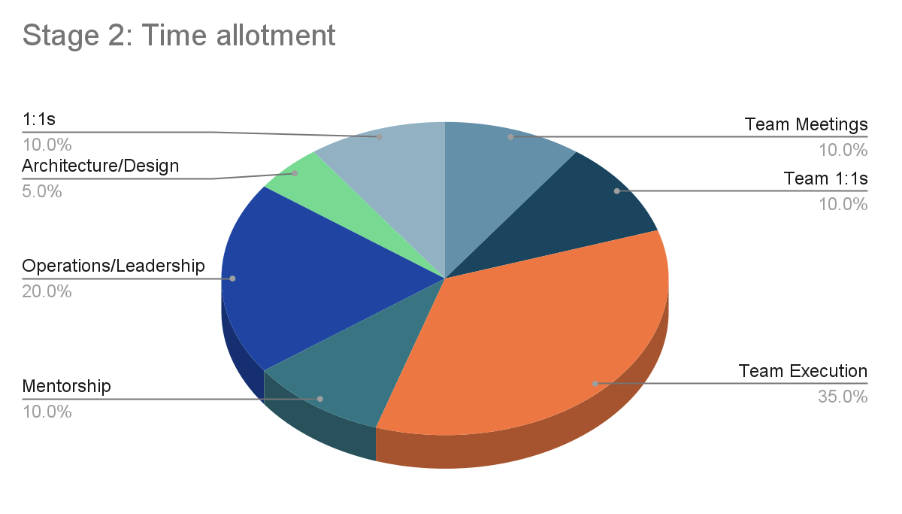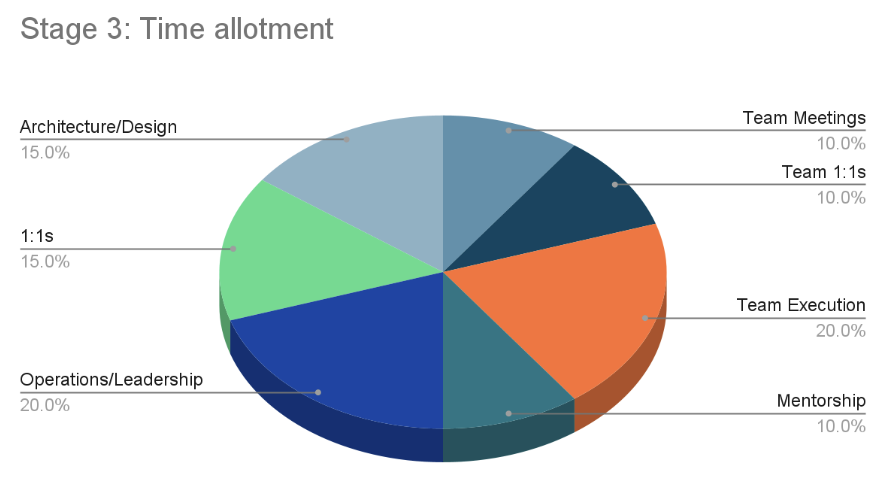This is your last article that you can read this month before you need to register a free LeadDev.com account.
A four-step guide to leveling up your team from the staff plus position.
It’s normal for engineering teams to get stuck. They might be reacting to incidents, treading water, or unable to deliver on their goals. But these problems are compounded when those teams are involved in high-priority deliverables for the company.
I’m a principal engineer at Recursion, where learning and caring are core values, and we believe the right thing to do for struggling teams (and the business) is to help them figure out how to get back on track. One way we go about this is temporarily embedding Staff+ individual contributors (ICs) on these teams to provide some extra help.
In the last 18 months, I’ve embedded on two different teams across business units, and worked with a diverse group of people (engineers, data scientists, and product managers) to successfully deliver on company priorities by improving the health and productivity of the teams. Working together, we’ve improved our delivery on quarterly goals from less than 30% to 90% in a span of two quarters.
Embedding on teams is fulfilling work. It allows you to not only influence meaningful change in the lives of your coworkers, but also enable progress towards your company’s mission.
If you’ve just been asked to embed on a team, or you’re interested in setting up a similar process in your own organization, here are some guidelines to help set you up for success.
How to embed on a team
Embedding on a team is strategic in nature. It’s driven by specific outcomes that are aligned between you, leadership, and team management. Before embedding on a team, it’s important to understand the full context of the situation, including the team’s performance in the last few quarters, their technical support load, their team health (if available through surveys), their alignment with product, and finally, their deliverables and areas of growth.
The four stages of embedding on a team
There are four stages to embedding on a team: tactical, partnership, support, and redundant. The diagram below shows how we visualize this. It includes areas to focus on and outcomes to anticipate at each stage.
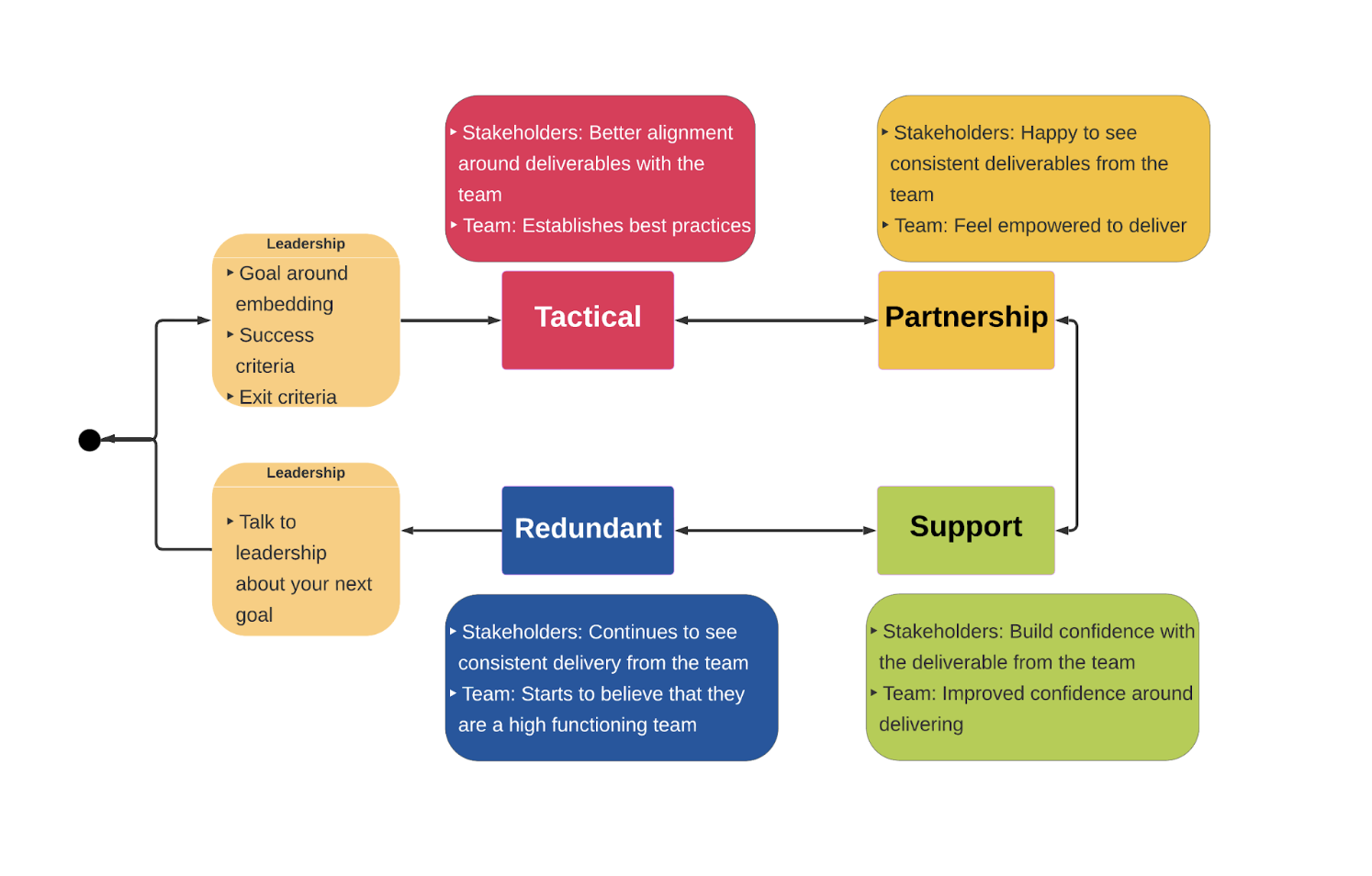
Stage 1: Tactical
During this stage, you meet your teammates, build relationships, and build context around the problem you’re aiming to solve together.
This phase involves a lot of listening. Set up one-on-ones with each team member and ask a consistent set of questions so you can understand their mindset, strengths, interests, and growth areas. This will allow you to build a mental image of the team; things going well, areas the team could grow in, and ways in which you can mold yourself to effectively work with each individual to succeed.
Additionally, make time to identify common interests outside of work to build connections. Common interests bring people together and support relationships. They can be particularly useful when you notice that someone on the team is not at 100%, or having a bad day for work or personal reasons.
During your one-on-one conversations with the team members, assure them that you are embedded on the team to support them and work together to deliver on the company’s priorities. Being explicit about it can help reduce any confusions or questions they might have around your presence on the team.
The most important relationship in this phase is that with the manager. They are your biggest collaborator in the mission. Take the time to build trust and establish a channel for open communication, and give and receive feedback with each other in a respectful way. Align on the deliverables that will enable the success of the team. Honest conversations around each individual’s strengths and growth areas help build that trust. You should be a shoulder for the manager to lean on, but remember, the manager owns the decisions around the team; you are there to provide guidance and be an ally.
Your relationship with the product manager (PM) is equally important as they are the primary liaison between the team and the stakeholders. The PM may have a different perspective on the team’s performance or barriers to success, so your role is to be the glue between product and engineering. Understanding and communicating the “what” and “why” behind a feature provides a connection to the mission and encourages a sense of ownership. These are important drivers of engagement, which will increase likelihood of success. The “what” can be spelled out with clear and crisp acceptance criteria in tasks and features.
Align weekly with the manager and PM on in-flight work, future work, things going well, and areas for improvement on future deliverables. These meetings provide a space for honest conversations and early feedback, and help strengthen the key relationships in the mission. Additionally, the team will benefit from a prioritized backlog.
The tactical phase of embedding also requires you to get your hands dirty and work alongside the team. This could mean collaborating on design documents, architecture diagrams, or writing and debugging code. By getting involved with hands-on collaboration, you can identify opportunities and gaps, which could be around the tech, process, or team dynamics. Be a part of the team’s on-call rotations. They are a great avenue to learn more about the team’s deliverables, and the brittle areas of the system. With buy-in from the team, use your influence to set some best practices identified from the gaps discovered. Tune one knob at a time, and monitor the impact before tuning the next knob. Working in a close setting allows for better understanding of each other and continues the trust-building process.
Run team retrospectives (including the PM) to monitor the health of the team and the impact of the best practices you’ve established. Identify areas that drain the team and partner with the manager to find solutions and remove barriers.
You can transition out of this stage when you see improved self-confidence in the team, an established relationship with the manager and PM, and a connection established between you and the team. This phase typically lasts between one and two quarters. The key ingredients to the success of this partnership are a growth mindset and patience, demonstrated by both you and the team.
The diagram below describes the different outcomes and relationships to anticipate during the tactical stage.
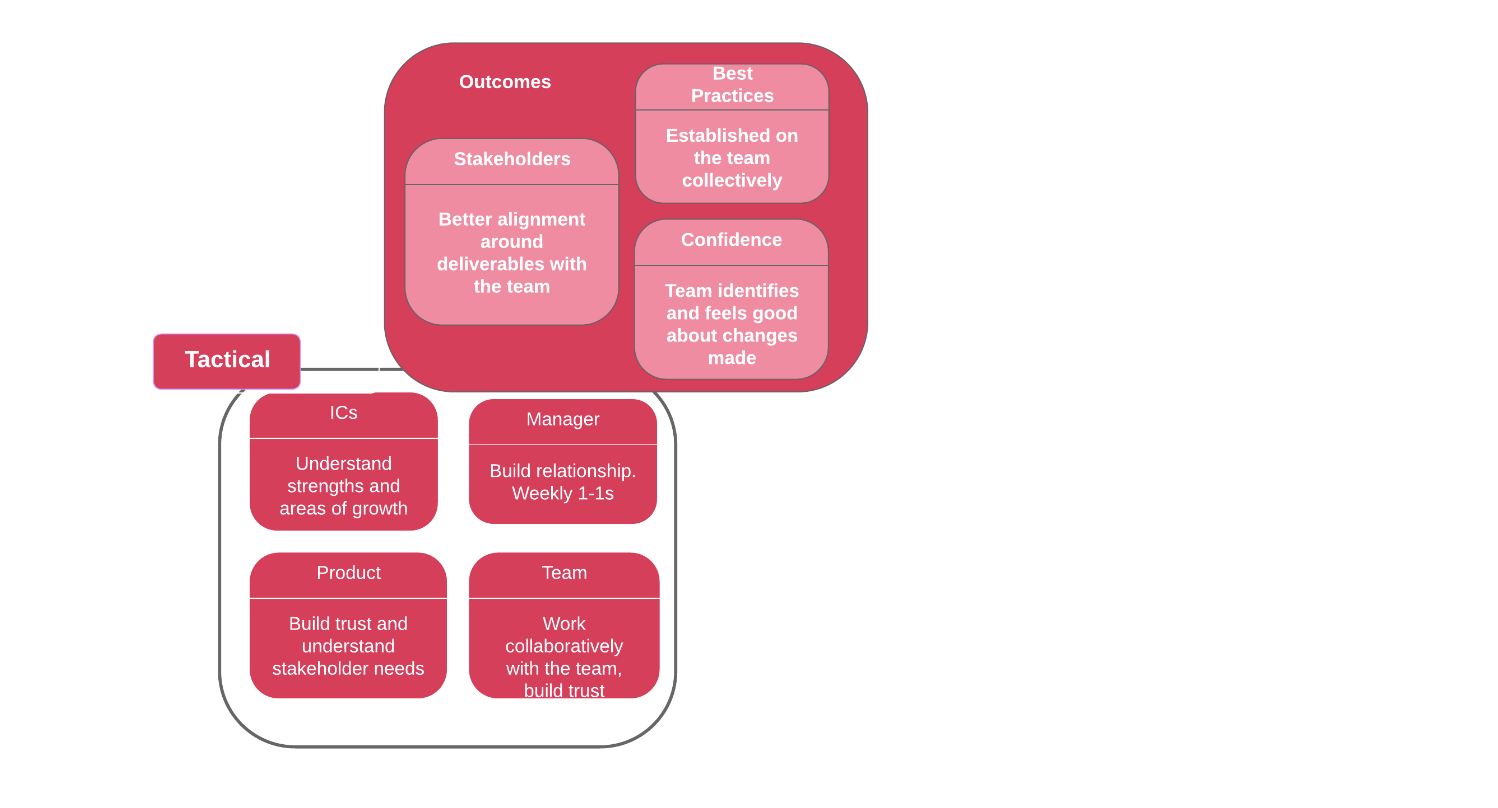
The next diagram is a rough depiction of your time allotment for the tactical phase. While this is an estimate, the key is to focus on slices with respect to the team.
Stage 2: Partnership
In this stage, you focus on transitioning from hands-on collaboration to being a strategic partner and empowering your increasingly confident team to drive deliverables. You strengthen the processes you established in the first phase, and the team regularly uses retrospectives to refine processes.
Begin to approach the team through the lens of a coach, asking questions when you notice anything that might derail the team from successful deliverables.
Features are led and delivered by individuals, with your partnership. Take the time to reflect with individuals about the things that went well, growth opportunities, and unexpected challenges that surfaced. These conversations deepen your trust with team members and create stronger bonds.
Work with the PM to set up time for stakeholders to provide feedback to the team around the impact of the team’s deliverables. This further helps build self-confidence on the team. Schedule team building activities, and include the product manager and other stakeholders. At this point, your weekly meetings with the manager could transition to bi-weekly.
These first two stages involve a lot of one-on-one mentorship, as well as you leading by example. You can transition out of this phase when you start seeing consistent deliverables by the team and stronger bonds established cross functionally. Strong partnership with your product manager ensures your team has a well-organized, prioritized backlog to work through, and also allows for focus on technical improvements that the team wants to make.
Here are the outcomes and relationships to anticipate during the partnership stage:
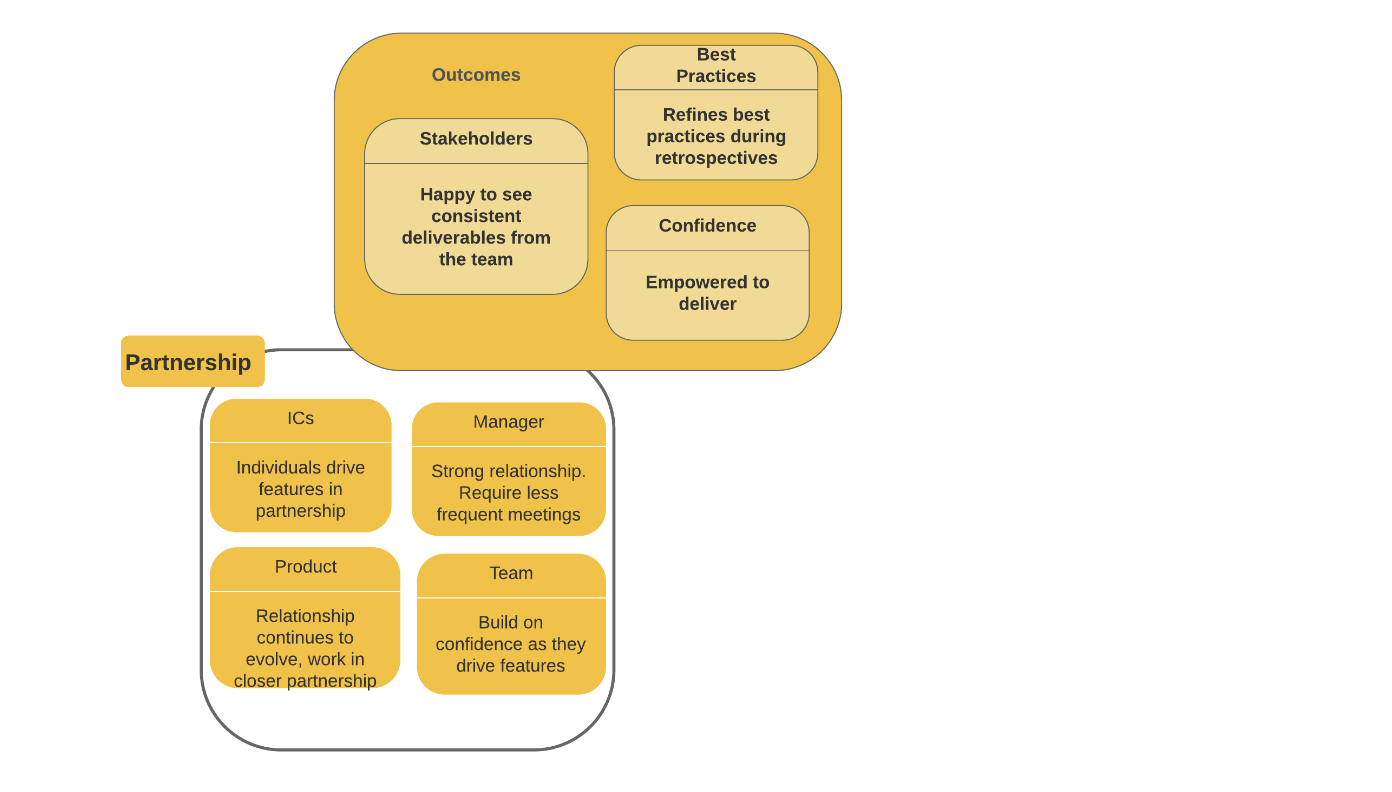
Here are some rough time estimations for the partnership stage:
Stage 3: Support
Now the team is able to lead the delivery of features, it’s time to step back and let them run the show. This phase, while deeply satisfying, can be emotionally challenging. You have to step away from the same individuals you built strong bonds with to give them space to deliver. Acknowledge the transition and align with senior leadership, team management, and the team.
You want the team to succeed with very little involvement from you. This can be difficult to accomplish. Attend design review meetings and if you see gaps, ask questions to allow the team to find solutions. Go over learnings with individuals after features are delivered, focusing on things that went well and things that surprised the team. By being there, you can weave a safety net around the team to catch them when they fall. Celebrate the wins.
Keep your eye on the prize: features should be tightly scoped with the team delivering value iteratively and continuing to demonstrate progress toward priorities. There should still be a healthy tension building new features and making technical improvements that the team wants to invest in. They have now transitioned to a healthy state and operate as a well-oiled machine.
Here are the different outcomes and relationships to prioritize during the support stage:
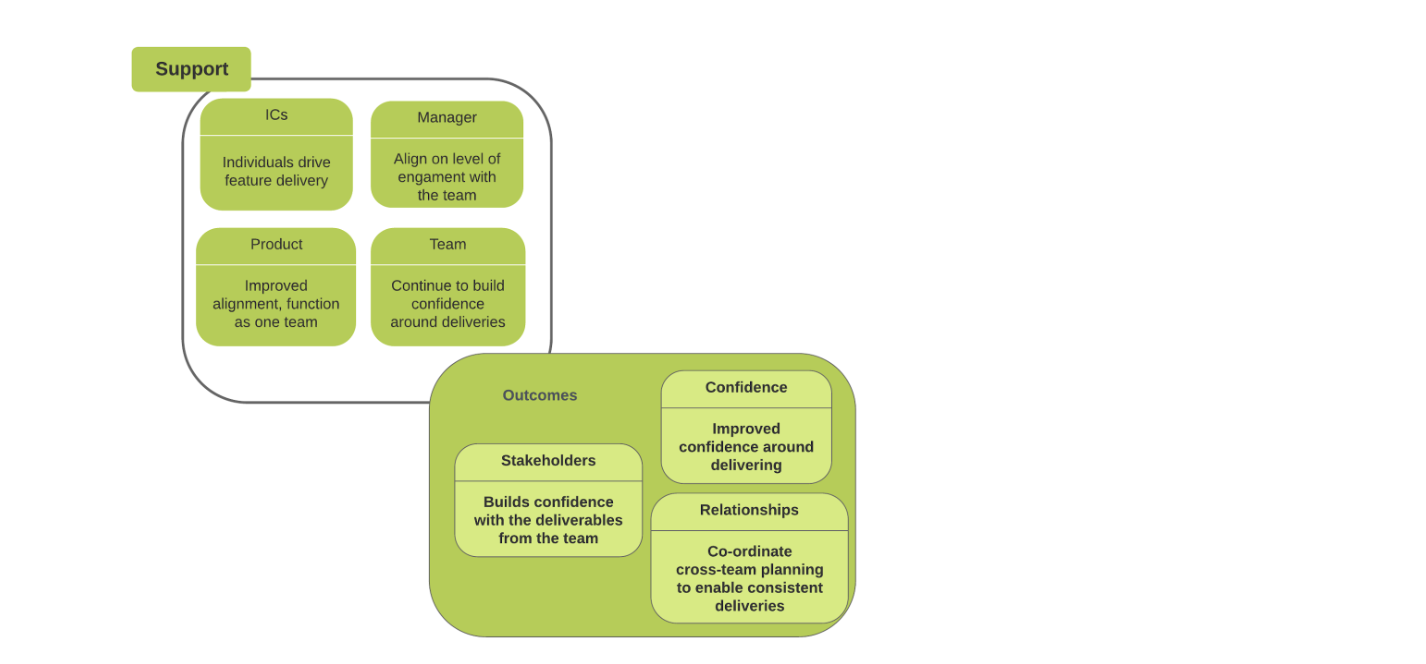
Here are some rough estimations for how to spend your time during the support stage:
Stage 4: Redundant
At this stage, the team is working well together and feels empowered to deliver with very little involvement from you. It is possible that you are barely involved in the day-to-day, and your presence at daily stand-up may even become a surprise. The team has established routines, best practices, strong cross-functional collaboration with other teams, and a healthy relationship with the product manager. At team retrospectives, you start to hear a consistent message; “we are a high performing team”. You start seeing signs of tactical work being done before you have had a chance to think about it, signaling your arrival at the final stage.
Now is the time to think about unembedding from the team. Embedding is a temporal process, and a key outcome for the Staff+ IC is to ensure the team is self-sufficient and self-confident in their ability to deliver.
Work closely with senior leadership to identify your next opportunities, or engage with the new team at a reduced capacity.
This is a great time for you to learn and grow as well. While flowing through the stages with the team, you’ll identify growth areas for yourself. For example, I found myself wanting to be better at delivering feedback, so I took the time to read, Thanks for the feedback by Douglas Stone and Sheila Heen, and worked with my coach to improve this skill gap.
Here are the core outcomes and relationships to consider during the redundant stage:
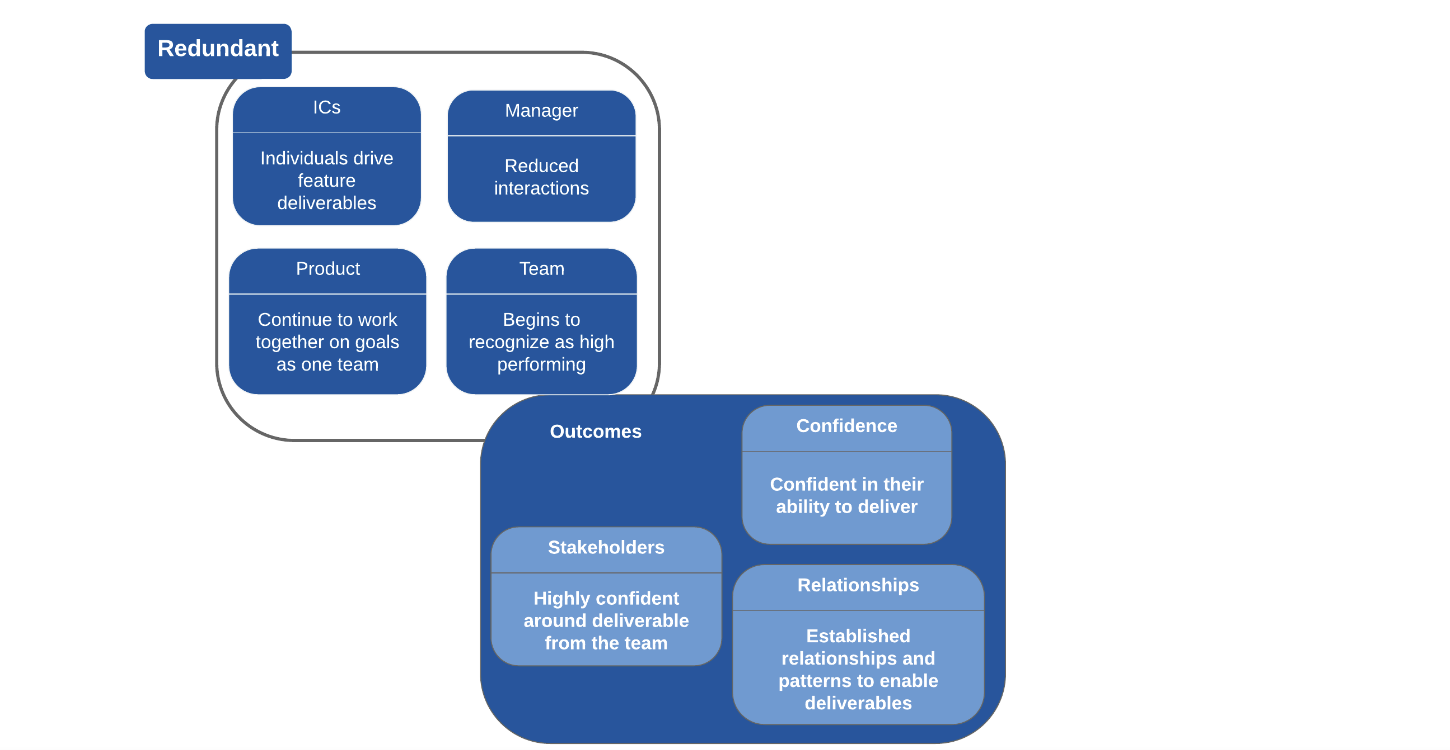
Here are some rough time estimations for the redundant stage:
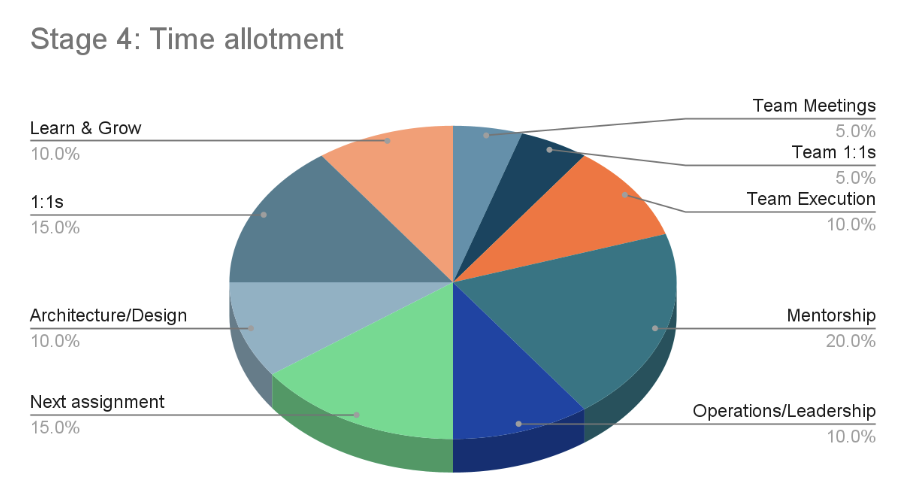
Reflections
Embedding on a team and working together to grow individuals and deliver on priorities for the company is some of the most satisfying work you can do as a Staff+ IC.
When you’re asked to embed on a team, approach it as an opportunity to build relationships as well as establish a deeper trust with the leadership. This is your opportunity to have a multiplicative impact in the organization. This isn’t about being a 10x individual contributor and delivering features, but growing people and empowering them to deliver and succeed as a team.
If I had only three words, I’d say, “Lead with empathy”. If I had three more, I would add, “all the time”.
With thanks to the Recursion team, Ben Sukow, Jordan Christensen, the Staff+ plus community, and the amazing teams I’ve embedded on.

